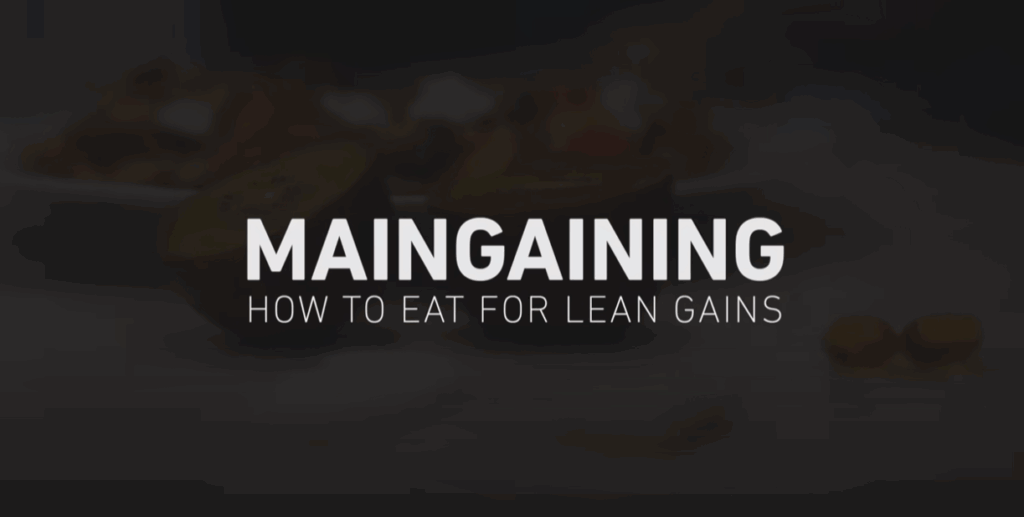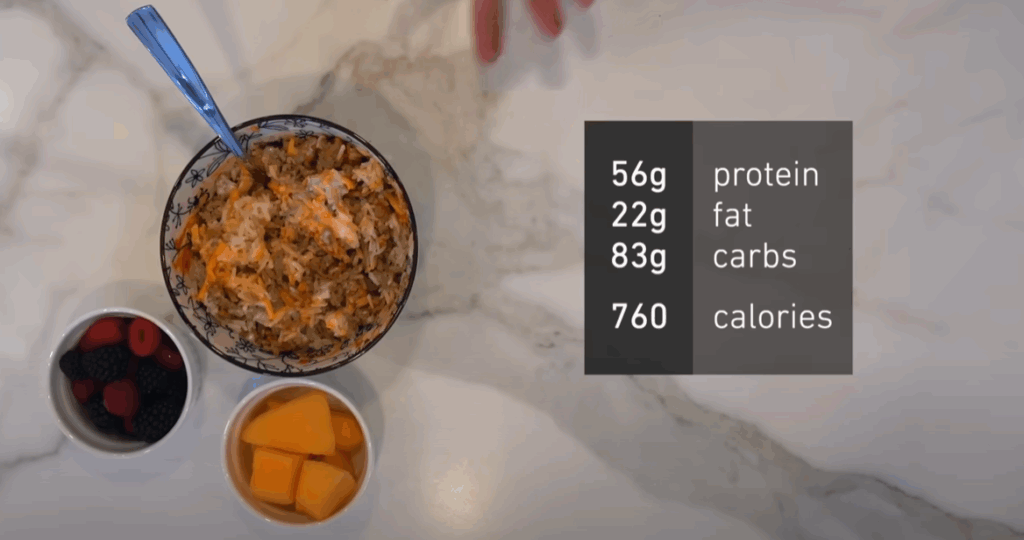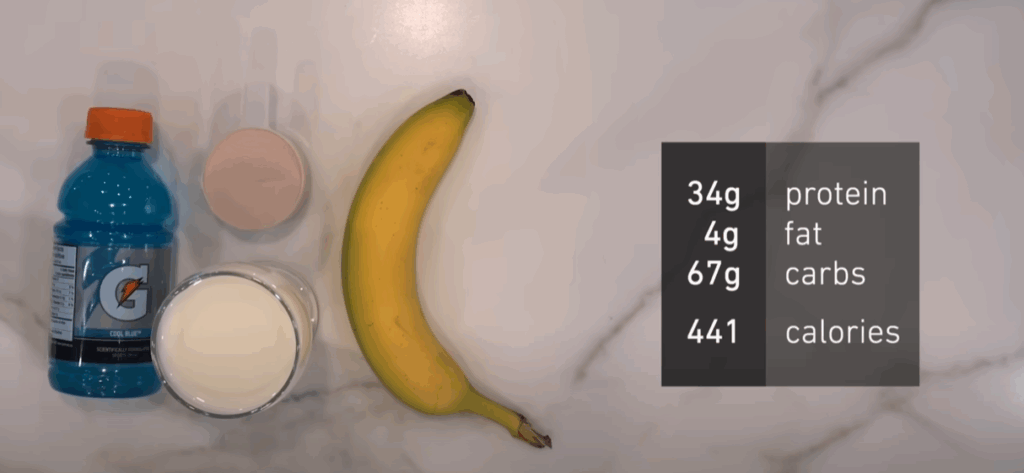Full Day of Eating for Main Gaining: Nutrition, Training & Strategy for Lean Muscle Growth
Main gaining—a method that blends the goals of muscle building with body composition maintenance—has become increasingly popular among natural lifters looking to make slow, consistent progress without the typical bulk-and-cut cycle. In this full-day breakdown, we’ll walk through what main gaining looks like in practice: the training strategy, calorie setup, meal timing, and nutrition choices that support lean mass gains without significant fat accumulation.

What Is Main Gaining?
Main gaining is essentially a form of body recomposition. It revolves around keeping your weight relatively stable while focusing on progressive overload in the gym and supporting recovery through well-structured nutrition. It’s often most effective toward the end of a long bulking period—when you want to tighten up without going into a full calorie deficit.
Unlike traditional bulking, where calorie surpluses can lead to noticeable fat gain, or cutting, where strength often plateaus, main gaining aims to build strength and possibly add muscle while staying at or just below maintenance calories.
For intermediate to advanced trainees with a decent base of muscle, it can be a powerful strategy to refine their physique while reinforcing good eating and training habits. Beginners may even see faster results due to their higher sensitivity to training stimuli.
Ideal Body Fat Range for Main Gaining
Contrary to what some online fitness influencers suggest, main gaining doesn’t mean staying ultra-lean year-round. In fact, trying to gain muscle at sub-10% body fat for men (or below 20% for women) can often backfire due to poor energy availability.
Instead, the sweet spot tends to be a moderate to slightly higher body fat percentage—roughly 12–20% for men and 20–30% for women. At these levels, your body has the fuel reserves needed for recovery and hypertrophy without accumulating excess fat.

Calorie and Macro Setup
The foundation of a successful main gaining phase is setting your calorie intake at or just above your maintenance level. For this case, let’s use an example of a 180-pound male lifter who recently finished bulking from 160 to 180 pounds and is now entering a main gain phase before cutting.
His daily macro targets might look like:
- Calories: ~3,000
- Protein: 200g (~1.1g/lb body weight)
- Fat: 90g (around 25–30% of calories)
- Carbs: 350g (the rest of the calories)
Protein intake is intentionally high to maximize muscle protein synthesis and support recovery. While 0.7 to 1.0 grams per pound is sufficient for most lifters, pushing it a bit higher can be helpful during recomp-style phases.
Fat is set moderately to support hormone health, and carbohydrates fill in the rest to fuel workouts and recovery.
Meal 1: Savory Breakfast Hash
The first meal is a nutrient-dense savory hash featuring diced baby potatoes, sautéed mushrooms, onions, garlic, turkey bacon, plant-based sausage, and bell peppers. Scrambled eggs and egg whites are added toward the end, along with a sprinkle of goat cheese for flavor.
- Macros: 42g protein, 25g fat, 40g carbs
Paired with a sungold kiwi and a supplement stack (creatine, fish oil, and a multivitamin), this meal sets the tone for the day: high in volume, rich in micronutrients, and protein-forward.
Meal 2: Quick Turkey Rice Bowl (Pre-Workout)
Meal two is a simple, high-protein pre-workout meal with minimal prep: microwaveable rice, chopped cooked turkey breast, shredded cheese, sour cream, and plenty of Sriracha. On the side, a bowl of mixed berries and cantaloupe adds fiber, antioxidants, and hydration.
- Macros: 56g protein, 22g fat, 83g carbs
This meal includes about 1g of carbs per kilogram of body weight, ideal for fueling an intense training session. The moderate fat content ensures satiety, and protein intake remains consistent with the day’s goals.
Intra-Workout Fuel
During the training session—a full-body powerbuilding workout—the lifter sips on a Gatorade for a quick carbohydrate boost (around 23g of carbs). This isn’t essential, especially when calories are sufficient, but it can enhance performance during longer or higher-volume workouts.

Post-Workout Recovery Shake
After training, when appetite is often low, a shake with whey/casein protein powder and a banana gets the job done. The mix offers a fast and slow release of amino acids to kickstart recovery.
- Macros: 34g protein, 4g fat, 67g carbs (including intra-workout drink)
The banana adds potassium and carbs to replenish glycogen, and the protein blend ensures muscle recovery begins immediately—even before hunger returns.
Meal 4: Chicken Burrito
This burrito is a post-workout reward packed with marinated pan-fried chicken, sautéed peppers and onions, black beans, rice, cheddar, guacamole, and salsa. The burrito is toasted for extra flavor and served with leftover rice and veggies on the side.
- Macros: 48g protein, 24g fat, 93g carbs
This is the highest calorie meal of the day—timed perfectly for the post-workout window when nutrient partitioning is most favorable.
Alternate Meal: Sometimes, a hearty bowl of high-fiber chili replaces the burrito for variety and satiety.
Final Meal: Greek Yogurt Mix (Before Bed)
The last meal of the day is designed to provide a slow-digesting protein source before sleep. A cup of Greek yogurt is mixed with a spoonful of peanut butter, a drizzle of honey, and a bit of artificial sweetener. Optional popcorn on the side adds fiber and volume.
- Macros: 25g protein, 17g fat, 63g carbs
The casein-rich yogurt helps sustain amino acid release overnight, reducing muscle breakdown during sleep. A touch of fat and fiber slows digestion and keeps blood sugar stable.
Flexibility and Tracking Tools
Although this plan is structured, there’s flexibility built in. Some days include takeout meals like sushi or Thai food, with macros loosely matched to the day’s targets. While daily tracking isn’t mandatory, tools like the MacroFactor app make it easy to adjust on the fly based on changes in weight, metabolism, or activity.
The app calculates calorie needs dynamically, making it ideal for lifters managing long-term phases like main gaining. It even tracks micronutrients, giving deeper insight into overall diet quality.
Final Thoughts
Main gaining is a sustainable approach for lifters who want to slowly build muscle without yo-yo dieting. With careful attention to protein intake, workout performance, and calorie balance, it’s possible to make noticeable improvements in strength and physique over time—even while staying at roughly the same body weight.
Whether you’re coming off a long bulk or just looking to build muscle at maintenance, this style of eating and training can be the perfect in-between phase that keeps you progressing without unnecessary fat gain.



